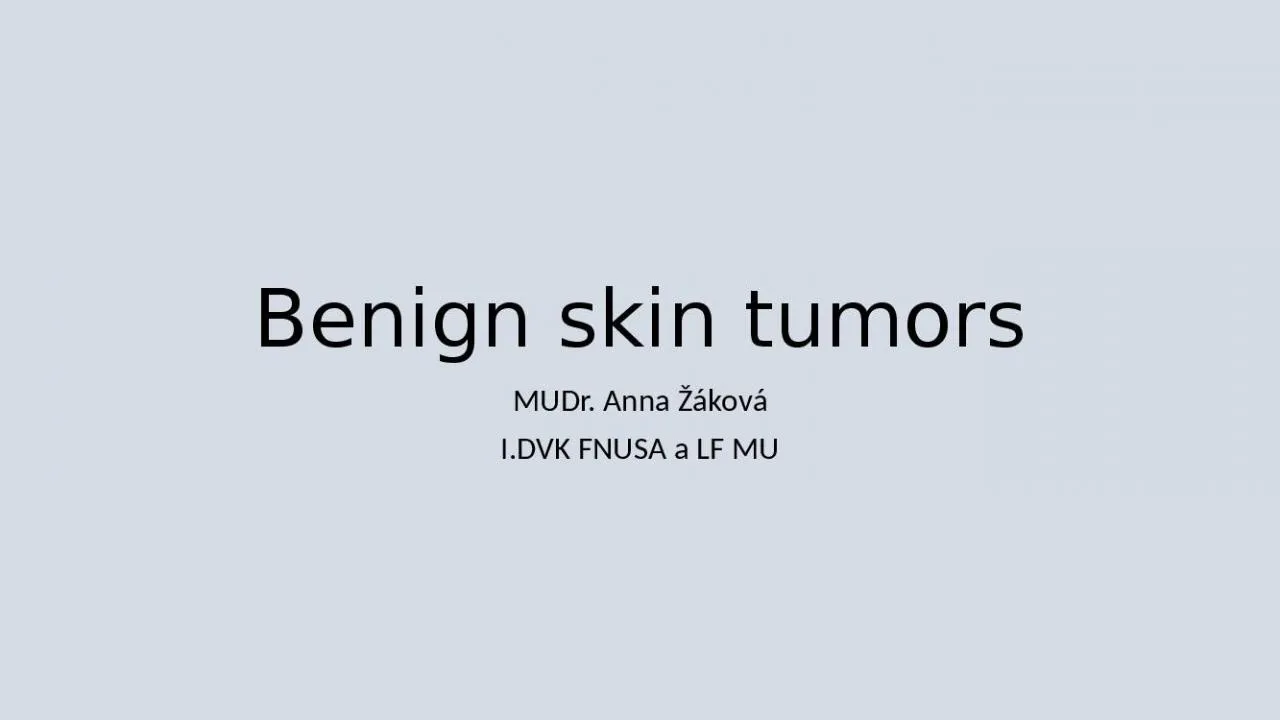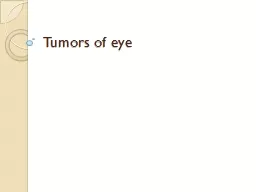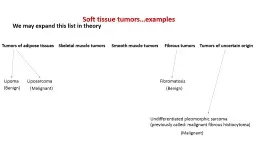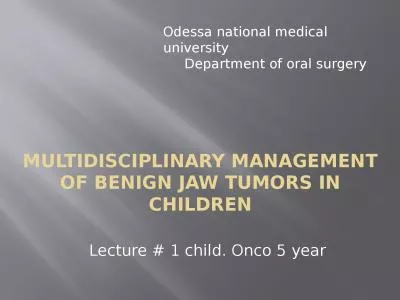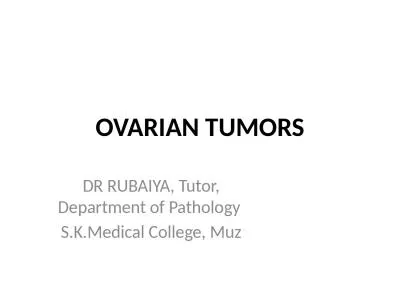PPT-Benign skin tumors MUDr. Anna Žáková
Author : amber | Published Date : 2022-05-18
IDVK FNUSA a LF MU They growth expansively so they can push to around tissue but they dont grow inside them and they dont destroy them They keep structural and functional
Presentation Embed Code
Download Presentation
Download Presentation The PPT/PDF document "Benign skin tumors MUDr. Anna Žáková" is the property of its rightful owner. Permission is granted to download and print the materials on this website for personal, non-commercial use only, and to display it on your personal computer provided you do not modify the materials and that you retain all copyright notices contained in the materials. By downloading content from our website, you accept the terms of this agreement.
Benign skin tumors MUDr. Anna Žáková: Transcript
Download Rules Of Document
"Benign skin tumors MUDr. Anna Žáková"The content belongs to its owner. You may download and print it for personal use, without modification, and keep all copyright notices. By downloading, you agree to these terms.
Related Documents

